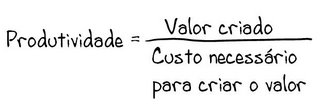Como calçar os sapatos do cliente?
.
Escrevi no segundo postal "Assim, a primeira coisa que faz é colocar-se na pele e nos sapatos dos clientes e
fazer mentalmente a viagem, desde que o potencial cliente vê publicidade sobre a loja, depois vê o exterior da loja, depois entra e é acolhido, depois vê, cheira, sente, toca, aprecia, coloca questões, movimenta-se, compra ou não, e sai."
.
A revista California Management Review desta
Primavera de 2008 traz um artigo sobre uma ferramenta muito útil para este batota, para cartografar a viagem que o cliente faz, desde a publicidade, passando pelos momentos de verdade até ao serviço-após venda: "Service Blueprinting: A Practical Technique for Service Innovation" de Mary Jo Bitner, Amy L. Ostrom, e Felicia N. Morgan.
.
O artigo não é disponibilizado de forma gratuita pela California Management Review, contudo... descobri
aqui uma versão do mesmo.
.
Os interessados podem começar por esta imagem (a figura 2)

Se ao mapa acrescentarmos agora os conceitos de pistas funcionais, mecânicas e humânicas, podemos começar a pisar um terreno mais firme para desenhar experiências positivas.
.
Se o mapa retratar a situação actual, a experiêncial actual "As Is", pode ser usado para um brainstorming sobre "Onde falhamos?", "Onde precisamos de melhorar?", "Onde podemos fazer a diferença?", se a resposta a cada uma destas perguntas ficar registada em post-its de cores diferentes... podemos marcar no mapa em que passos, em que pontos precisamos de agir.
.
Depois, desenhamos para cada post-it o "Should Be" o que queremos que seja!
.
Para depois listar o que é preciso fazer, por quem e até quando e... ladies and gentleman we got ourselves a plan. Um plano para nos levar ao futuro desejado!!!
.
Do artigo: "Organizations that are most successful in providing new services keep their service development processes from being ad hoc. In other words, they prepare and move systematically (and often iteratively) through a set of planned stages from the establishment of clear objectives, to idea generation, to concept development, service design, prototyping, service launch, and customer feedback. Service design requires an understanding of the customer outcome and customer process, the way the customer experience unfolds over time through interactions at many different touchpoints. A well designed service that is pleasing to experience can provide the firm with a key point of differentiation from competitors. A smoothly delivered service with a positive outcome is more likely to result in favorable service quality and brand image evaluations, which both have influence on customer loyalty. Recurrent service quality problems are often the result of poor design."
.
Outras fontes sobre o tema: "
Designing Services That Deliver" de G. Lynn Shostack; "
How to Lead the Customer Experience" de Stephan H. Haeckel, Lewis P. Carbone, e Leonard L. Berry; e sobretudo esse tratado de poesia "The Experience Economy: Work Is Theater & Every Business a Stage" de
Joseph Pine e James Gilmore"
.
Um pequeno fragmento do livro:
.
“Even those businesses which do not yet stage experiences must understand that whenever employees work in front of customers, an act of theatre occurs.”
...
“What should occur on that stage, and what should be relegated to off-stage activities? One grocery clerk talking over a customer’s head to the clerk in the next aisle about what they’re going to do after work may seem to them insignificant, but for the customer it is an act of indifference. So what acts make for compelling theatre?
.
The grocery clerk should ask himself how he might scan the canned goods with flair, what dramatic voice and entertaining words he might use when asking for a credit card, and especially how to perform the personal touches that come with exchanging cash, credit card, or receipt."










 O mesmo pode ser feito para os equipamentos e aplicações informáticas. Em cada actividade que constitui um processo, o que é usado?
O mesmo pode ser feito para os equipamentos e aplicações informáticas. Em cada actividade que constitui um processo, o que é usado?

 Se ao mapa acrescentarmos agora os conceitos de pistas funcionais, mecânicas e humânicas, podemos começar a pisar um terreno mais firme para desenhar experiências positivas.
Se ao mapa acrescentarmos agora os conceitos de pistas funcionais, mecânicas e humânicas, podemos começar a pisar um terreno mais firme para desenhar experiências positivas.%2006.21.jpeg)












